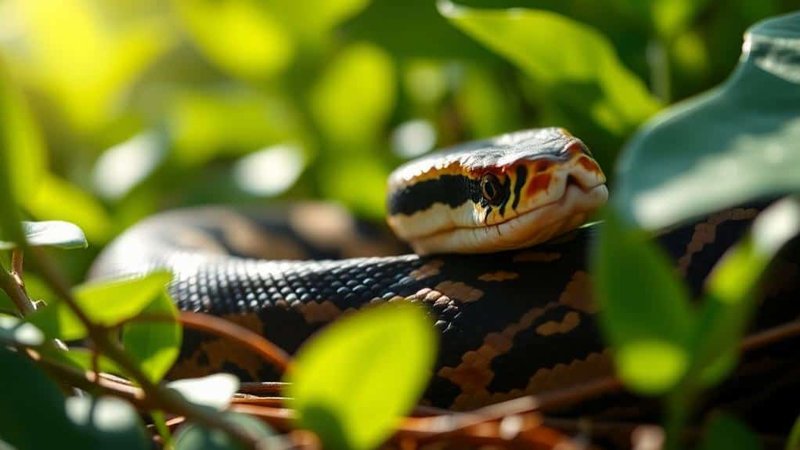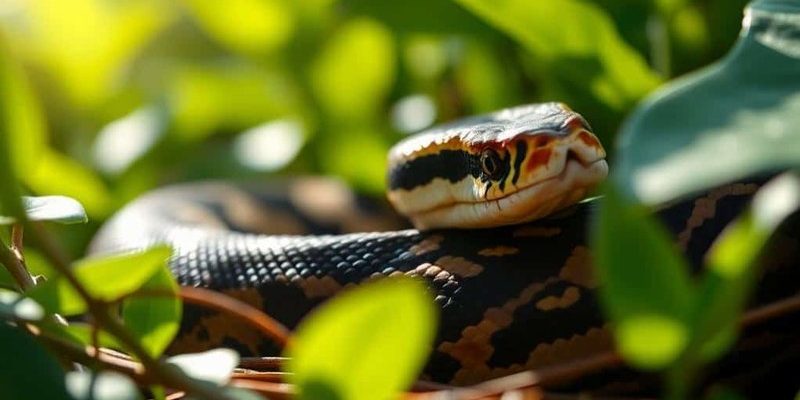
Imagine you’re at a coffee shop with a friend, and they tell you their pet seems to have gone into a deep sleep. You might wonder if they’re okay or if something’s wrong. Well, that’s how many people feel when they notice their ball python is less lively than usual. Let’s dive into what brumation is, why it matters, and how to manage it, so you can be a confident and informed snake parent!
What Is Brumation?
Brumation is a natural response to changing environmental conditions, particularly temperature and light. In the wild, ball pythons experience brumation during the cooler months, which is their way of coping with less food availability and a drop in temperature. During this period, their activity levels significantly decrease, and they may go weeks or even months without eating.
You might be wondering how this compares to hibernation. While both brumation and hibernation involve periods of inactivity, the key difference lies in metabolism. For instance, hibernating animals can often still wake up to eat periodically, while reptiles like ball pythons enter a more profound state of dormancy, where their metabolism slows drastically.
Understanding this natural cycle is crucial for ball python caretakers. It helps you ensure your snake is healthy and comfortable, aligning its care routine with its natural rhythms.
Signs of Brumation in Ball Pythons
So, how can you tell if your ball python is brumating? There are a few key signs to watch for:
- Reduced Activity: Your snake may spend most of its time in its hide or coiled up, showing little interest in exploring its habitat.
- Decreased Appetite: It’s common for ball pythons to refuse food during this period. If your snake isn’t eating for weeks, it could be a sign of brumation.
- Lower Body Temperature: You might notice your snake feels cooler to the touch, as their body temperature drops during this phase.
It’s important to note that not all ball pythons will brumate, and the length and timing can vary significantly. Some may start their brumation period in late fall, while others may not enter this state at all.
Still, if you notice these signs, it’s likely that your snake is just following its natural instinct.
How Long Does Brumation Last?
The duration of brumation can vary widely. Many ball pythons will brumate for about one to three months. This period can depend on several factors, including temperature and the individual snake’s health.
Typically, temperatures between 60°F and 75°F (15°C to 24°C) can trigger this dormant phase. A drop in temperature signals to the snake that it’s time to slow down. If your ball python has entered brumation, you might notice they emerge for short periods, especially if the climate warms up a bit.
Monitoring your python during this time is crucial. Ensure that it has access to hydration without pressuring it to eat. If brumation lasts too long, or if your snake starts showing concerning signs, it may be worth consulting a vet.
Preparing for Brumation
Before your ball python enters brumation, it’s essential to prepare both your snake and your habitat. Here’s how to do it:
1. Adjust the Temperature: Gradually lower the temperature over a few days to mimic the natural cooling effect of the season. Aim to keep it in the range mentioned earlier, around 60°F to 75°F.
2. Reduce Lighting: Cut down on the lighting hours from about 12 hours to 8 or 10 hours. This simulates the shorter days of winter.
3. Stop Feeding: As your python transitions, gradually stop feeding it a few weeks before the onset of brumation. This will prepare its body for the dormant period.
4. Check Habitat Conditions: Ensure the humidity and overall habitat conditions remain stable during this time. You want to keep your snake cozy without any drastic changes.
These steps can help ensure a smooth transition into brumation, making it easier for both you and your snake.
Managing Your Ball Python During Brumation
Once your ball python is in brumation, managing its needs becomes crucial. Remember these tips to maintain a safe environment:
– Leave Them Alone: It might be tempting to check on your snake regularly, but it’s best to limit handling. Disturbing your python can stress it during this delicate time.
– Hydration Is Key: Make sure fresh water is always available in their enclosure. They might not drink as much, but access to water is essential.
– Watch for Any Changes: Keep an eye out for any signs of illness or distress, such as any unusual discharge or lethargy beyond expected norms. If you have concerns, consult a veterinarian.
You might think of brumation as your snake’s way of taking a long nap, and just like any good nap, it requires a peaceful environment to be effective.
When to Seek Help from a Veterinarian
While brumation is a natural process, there can be times when it’s essential to reach out to a vet. Here are some situations where a consultation is a good idea:
– Prolonged Brumation: If your ball python is unresponsive for more than three months without signs of waking up, it may be time to seek professional advice.
– Health Concerns: Any unusual physical symptoms, like swelling or discharge, should be taken seriously.
– Refusing Food Post-Brumation: After the brumation period ends, if your snake refuses food for an extended period, it’s wise to have it checked.
Being proactive ensures your ball python remains healthy and happy year-round.
Understanding brumation in ball pythons is a vital part of being a responsible pet owner. While it might feel strange to see your snake in a state of dormancy, it’s part of their natural life cycle. Just remember to adjust their environment, keep an eye on them, and provide proper hydration.
By respecting this natural rhythm, you’ll help your ball python thrive, maintaining its health and happiness. Embrace this unique aspect of caring for your snake, and you’ll be well on your way to being a knowledgeable and compassionate snake parent!

